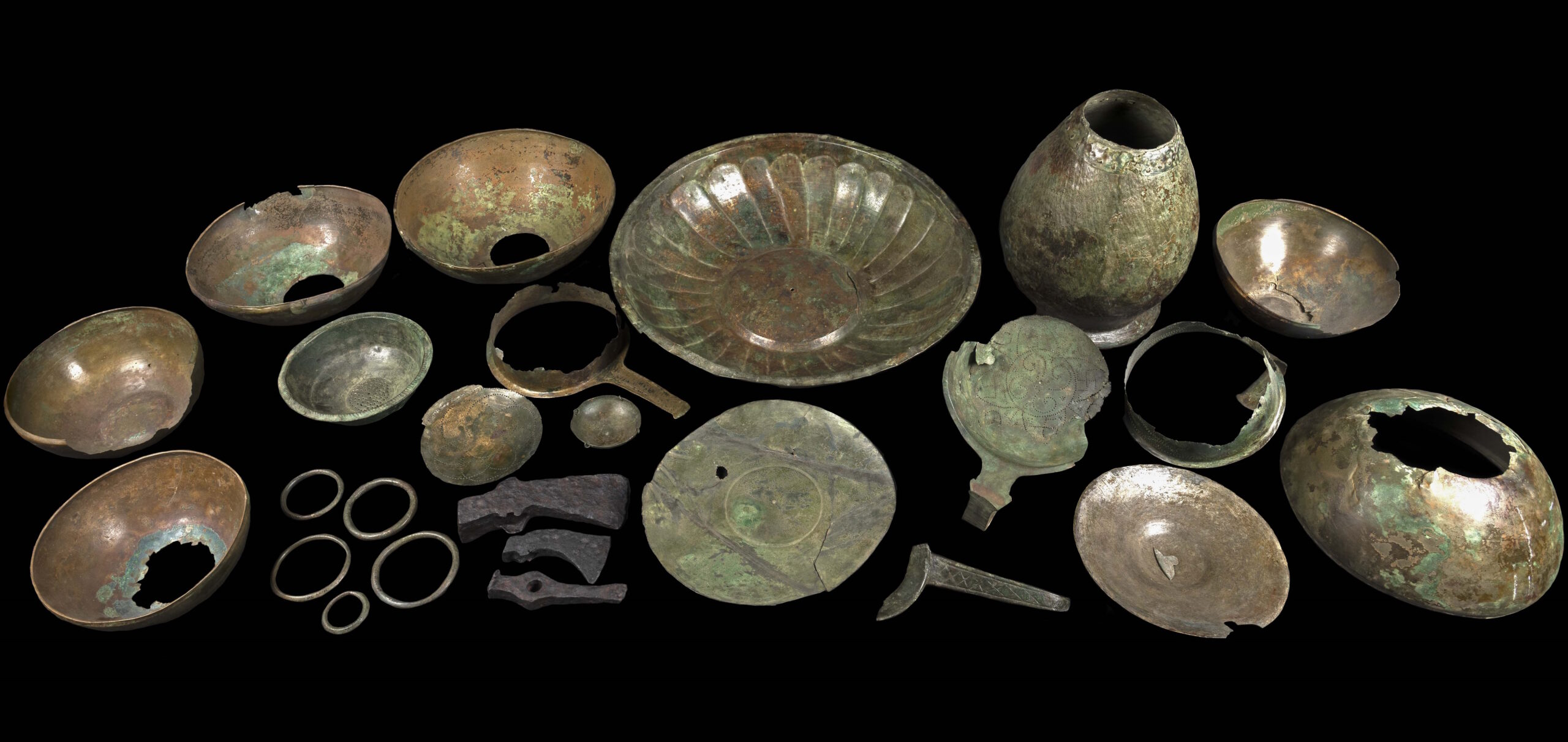Newcastle University archaeologists have completed the first comprehensive study of the largest Roman bronze vessel hoard ever found in Britain, 160 years after it was discovered. The circumstances of its discovery were never documented and most of the hoard was tragically melted down by accident shortly after the find, so there are many unanswered questions about this exceptional grouping of late-Roman metalware.
As the story goes, enough copper-alloy vessels and iron tools to fill a “large sack” were found near Knaresborough in North Yorkshire sometime around 1860. The objects were sent to the iron foundry of one Thomas Gott in Knaresborough where the foreman mistook them for scrap metal and melted most of them down. In 1864, Gott donated eight vessels and fragments from two more to what would become the Yorkshire Museum. This first round of donations included a large fluted bowl almost 19 inches in diameter, three of four smaller bronze bowls of the Irchester form, a round dish and pieces of two strainers with handles. He donated the rest of the surviving hoard to the museum in 1876, the year before he died.
Today there are 31 surviving vessels, tools and fragments from the hoard in the permanent collection of the Yorkshire Museum. The lost pieces include several more 9-inch plates, several ovoid flat plates with handles with ornamented rims, fragments of other basins and plates, several bridle bits, a large number of iron nails and tools, among them what appeared to be a fire grate with four crossbars.
Gott kept whatever information he knew about the find site and discovery to himself. The research team did find a clue in his correspondence: that they had been found during the digging of a drain two miles north of Knaresborough. That makes the village of Farnham the likely spot, and real estate notices in the local paper at that time point to drainage work taking place in the marshy land of Low Hall just north of Farnham. Low Hall’s land manager, Frederick Hartley, was pals with Gott and they served together on the Knaresborough Improvements Commission. Hartley’s crew probably found the hoard in the marshy land of the Vale of Mowbray and he sent it to Gott, either as a favor or to make a few bucks on the side.
During the Roman period, two important Roman roads ran through the Vale: Cade’s Road, which ran north-south on the eastern side, and Dere Street to the west, which was a significant route providing a connection to York and Hadrian’s Wall. Because of these connections, there were a number of wealthy Roman villas in the area and it is thought that the items in the collection may have come from one of these, or an affluent townhouse or settlement close by.
The Knaresborough Hoard is the only known example of a late Roman hoard of this type to be recovered from a bog or marsh in Britain.
The large fluted bowl is a unique find in the British Isles. Basins of this form and size are usually made of gold and silver. This is the first bronze one found in Britain. It also had a rest that it sat on for dinner service. This stand is also the only example of its kind discovered in Britain.
The research team say that many of the items were clearly meant to impress guests at the table when displaying or serving food as when polished, the bronze would have resembled gold and would have suggested a certain level of wealth.
By carrying out a portable X-ray fluorescence analysis the team were able to confirm the composition of ancient alloys and discovered that many of the items in the collection also showed signs of ancient repairs, reinforcing the fact they were made from a valuable material.
The study has been published in The Antiquaries Journal. The final publication is only available via institutional login or for purchase, alas, but the accepted version can be read in its entirety here (pdf).
* This article was originally published here







No comments:
Post a Comment